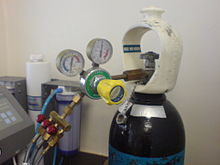**Historical Development of Gases:**
– Humans discovered the use of air to enhance fire.
– Various warm gases were utilized for cooking and smoking foods.
– Ancient knowledge of carbon dioxide in fermentation.
– Early utilization of natural gas by the Chinese and sulfur dioxide by Romans.
– Notable gas production advancements like the Brin process and Haber Process.
**Technologies in Gas Production:**
– Air separation plants refining air for nitrogen, oxygen, and argon.
– Cryogenic technologies enabling liquefaction of gases like natural gas and hydrogen.
– Processes like steam reforming and amine treating for gas production.
– Development of techniques like the electrolysis of water for hydrogen production.
– Innovations such as the vapor-compression refrigeration cycle and LPG production.
**Industrial Gas Applications and Usage:**
– Wide applications in industries like oil, petrochemicals, and medicine.
– Essential role in steelmaking, electronics, aerospace, environmental protection, and biotechnology.
– Distribution methods including bulk delivery, cylinders, and on-site production plants.
– Customized gas mixtures for specific industrial processes.
– Diverse sectors served by the industrial gas industry with specialized products.
**Gas Distribution and Delivery:**
– Storage in gas cylinders and supply as liquids under pressure.
– Delivery methods via pipelines, cylinders, bulk liquids, and on-site production plants.
– Various options like local generation, bulk transport, and packaged gases for delivery.
– Color coding standards for gas cylinders ensuring safety.
– Differentiation between gases based on source, use, and supply mode.
**Market Analysis and Scientific Impact:**
– Global and U.S. industry analysis of key gases like hydrogen, nitrogen, and oxygen.
– Market segments, trends, and growth patterns in the industrial gases sector.
– Scientific impact of industrial gases on chemical, physical sciences, and research.
– Recent events like the CO2 shortage in 2018 and its implications on the industry.
– Media coverage, market dynamics, and reactions to industry events.
Industrial gases are the gaseous materials that are manufactured for use in industry. The principal gases provided are nitrogen, oxygen, carbon dioxide, argon, hydrogen, helium and acetylene, although many other gases and mixtures are also available in gas cylinders. The industry producing these gases is also known as industrial gas, which is seen as also encompassing the supply of equipment and technology to produce and use the gases. Their production is a part of the wider chemical Industry (where industrial gases are often seen as "specialty chemicals").

Industrial gases are used in a wide range of industries, which include oil and gas, petrochemicals, chemicals, power, mining, steelmaking, metals, environmental protection, medicine, pharmaceuticals, biotechnology, food, water, fertilizers, nuclear power, electronics and aerospace. Industrial gas is sold to other industrial enterprises; typically comprising large orders to corporate industrial clients, covering a size range from building a process facility or pipeline down to cylinder gas supply.
Some trade scale business is done, typically through tied local agents who are supplied wholesale. This business covers the sale or hire of gas cylinders and associated equipment to tradesmen and occasionally the general public. This includes products such as balloon helium, dispensing gases for beer kegs, welding gases and welding equipment, LPG and medical oxygen.
Retail sales of small scale gas supply are not confined to just the industrial gas companies or their agents. A wide variety of hand-carried small gas containers, which may be called cylinders, bottles, cartridges, capsules or canisters are available to supply LPG, butane, propane, carbon dioxide or nitrous oxide. Examples are whipped-cream chargers, powerlets, campingaz and sodastream.
